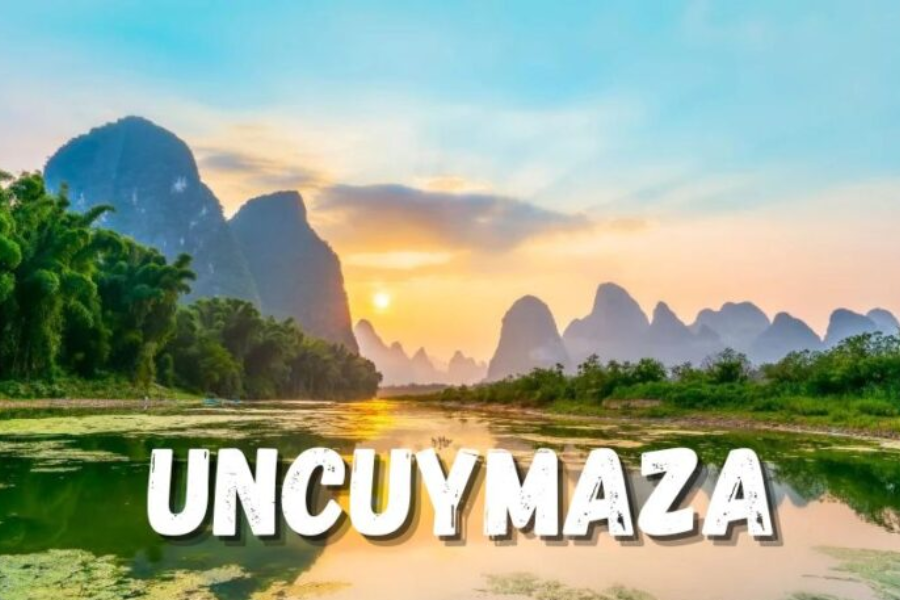Introduction
Uncuymaza is far more than just a game; it embodies a vibrant tradition that has captivated players across diverse cultures and generations. With its origins deeply rooted in community gatherings, this engaging pastime fosters togetherness through friendly competition and joy. Picture children playing in sunlit streets or families huddled around tables, united by the same goal: to outwit one another while enjoying themselves. As we delve into Uncuymaza’s global journey, you’ll uncover how various regions have put their unique stamp on this timeless classic. From strategic adaptations to heartwarming cultural influences, the story of Uncuymaza is as varied as its players. Let’s explore these diverse interpretations and discover what makes Uncuymaza resonate so profoundly with so many people!
Different Variations of Uncuymaza Around the World
Uncuymaza, a game steeped in tradition, has taken on various forms as it has traveled across different cultures. Each region adds its distinct twist to the game.
In the Andes, players often use stones or small objects to represent their game pieces. While the rules may differ slightly, the fundamental objective of strategic placement and movement remains the same.
In parts of Europe, Uncuymaza has evolved into a more modern version, featuring colorful tokens and elaborate boards designed for competitive play. Tournaments are a common sight, attracting enthusiasts from all walks of life.
Asian adaptations of Uncuymaza often incorporate traditional elements such as calligraphy or folklore motifs on the playing surfaces. These additions not only enhance the gameplay but also connect players to their cultural heritage.
These variations showcase how Uncuymaza transcends geographical boundaries while preserving its core essence. Each regional interpretation fosters community engagement through friendly competition and shared experiences.
Cultural Influences on Uncuymaza Adaptations
Cultural influences play a pivotal role in shaping the different versions of Uncuymaza around the world. Each region imparts its own character to the game, reflecting local traditions and customs.
In many South American countries, for example, indigenous practices blend with modern elements, enriching the gameplay and transforming it into a cultural experience rather than just a pastime.
Conversely, European adaptations might introduce strategic board layouts or unique scoring systems inspired by chess-like games. These changes add complexity while maintaining the game’s fundamental essence.
The social dimension is also crucial. In some cultures, Uncuymaza serves as an intergenerational link, bridging gaps between younger players and their elders.
Food and music often accompany matches in various settings, turning simple games into lively community events where laughter and enjoyment are at the forefront.
The Popularity and Spread of Uncuymaza
Uncuymaza has evolved from its modest beginnings into a beloved game across different cultures. Its simplicity and accessibility appeal to players of all ages.
Communities worldwide have embraced Uncuymaza, each adding their unique styles and rules. This adaptability has allowed the game to flourish in various environments, from casual backyard gatherings to formal community events.
Social media has significantly contributed to the game’s popularity. Videos showcasing exciting matches and innovative adaptations are attracting new players every day.
Local tournaments are emerging everywhere, promoting camaraderie and celebrating cultural heritage through friendly competition. As more enthusiasts share their experiences, Uncuymaza’s global legacy continues to expand.
The joy of this engaging pastime is being discovered by more people, connecting generations and creating lasting memories along the way.
Strategies and Tips for Playing Uncuymaza
To master Uncuymaza, a combination of skill and strategy is essential. Understanding the game’s dynamics is crucial for outmaneuvering your opponents.
Begin by carefully examining the board layout. Identify potential winning paths while also strategizing to block your opponent’s moves. This dual focus can provide a tactical advantage.
Effective communication with teammates can enhance gameplay. Share insights or strategies subtly during the game without alerting opponents to your plans.
Timing is also vital. Knowing when to adopt an aggressive stance versus playing defensively can shift the momentum of the game in your favor.
Experiment with different tactics as you play more rounds. Each match presents unique opportunities for creative strategies.
Regular practice with a variety of players will help you refine your skills and adapt to diverse play styles, ensuring you are always prepared for any challenge.
How to Create Your Own Version of Uncuymaza
Designing your own version of Uncuymaza is a fun and creative endeavor. Start by selecting a flat surface, such as a tabletop or the ground. Use chalk or tape to outline the game area.
Gather small objects to use as game pieces—these could be stones, buttons, or even coins. Ensure each player has a distinct set to avoid confusion.
Decide on your scoring system. Traditional rules might involve points for landing on specific areas, but feel free to innovate with your own scoring methods.
Consider adding unique elements, such as bonus rounds where players must complete challenges before their turn.
Invite friends over to test your custom rules. The more creative you get, the more enjoyable the game experience will be! Embrace the opportunity to experiment with different strategies and enjoy playing with your personalized version of this classic game.
Conclusion
Uncuymaza is much more than a game—it’s a cultural bridge that unites people across different regions through shared enjoyment and strategic challenge. From its traditional roots in the Andes to modern adaptations in Europe and Asia, Uncuymaza showcases the richness of cultural exchange and the adaptability of timeless pastimes. Whether played with simple stones or elaborate boards, its core essence remains the same: fostering community, encouraging strategic thinking, and creating joyful experiences. As it continues to evolve and spread globally, Uncuymaza remains a testament to the power of games to bring people together and celebrate cultural diversity.
FAQs
1. What is Uncuymaza?
Uncuymaza is a traditional game known for its strategic gameplay and community engagement. It has various adaptations around the world, each incorporating unique elements and cultural influences.
2. Where did Uncuymaza originate?
Uncuymaza has its origins in the Andes, where it was traditionally played with stones or small objects. It has since spread to various regions, each adding its own twist to the game.
3. How do different cultures adapt Uncuymaza?
Different cultures adapt Uncuymaza by incorporating local traditions and elements. For instance, in Europe, the game might feature colorful tokens and elaborate boards, while in Asia, traditional motifs and calligraphy might be used on the playing surfaces.
4. What are some common strategies for playing Uncuymaza?
Effective strategies include carefully examining the board layout, identifying potential winning paths, and blocking opponents’ moves. Communication with teammates and understanding when to be aggressive or defensive can also enhance gameplay.
5. How can I create my own version of Uncuymaza?
To create your own version, start by outlining the game area on a flat surface, gather distinct game pieces, and decide on a scoring system. Feel free to add unique elements or bonus rounds to make the game more enjoyable. Invite friends to test your custom rules and enjoy the process of personalizing this classic game.
Keep up-to-date with breaking news and updates on headlines



